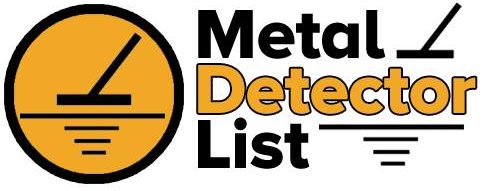Contents
Metal Detector Checklist
[indeed-social-media sm_list=’fb,tw,goo,pt,li’ sm_template=’ism_template_1′ sm_list_align=’horizontal’ sm_display_counts=’true’ sm_display_full_name=’true’ print_total_shares=1 tc_position=’before’ tc_theme=’dark’ ]Spending your day’s metal detecting can be fun for all ages, but making the most out of the day is important when metal detecting. This is the guide to everything you need to know for a productive & fun day of hunting
Tools and Accessories
Some specific tools that you will want to have for your dig are:
• Pinpointer: A small handheld metal detector that pinpoints exactly what item you are looking for.
• Small Hand Digger: A small digger used for smaller dig radiuses.
• Sand Scoop: Used for digging on beaches and in the sand.
• Headphones: Most machines come with high-end stock head phones but the entry level machines will not and you will want a good set of headphones to hear where your target item is.
If you are a newbie who is a yet to make that all important 1st metal detector purchase you should find out firstly how metal detectors work and secondly check out some reviews of the best machines.
Where to Detect
When trying to plan the best day for metal detecting find the perfect place is key. Some great places to metal detect are public schools, public parks, beaches, woods and private properties.
If you’re feeling really adventurous you might even consider some underwater metal detecting – click here for a good guide to suitable detectors.
The first thing you need to do when looking at these places that you need to make sure that you have permission or the correct permits to metal detect on these properties. Some parks, even though they are public, may not allow metal detecting especially if the park is owned or run by the state.
Do Your Research
While the main mission of metal detecting is to have fun, you need to make sure that you are making some part of the hunts a little productive. Some great ways to figure out the spots you want to hit are old maps, local history books, old newspapers, state-specific treasure guides, and landowners.
Steps to Digging the Perfect Plug
The first step to digging the perfect plug is to find your target digging spot. From the target digging spot you are going to take out your hand digger and dig about three to five inches away target area.
After you have found that spot you are going to turn your digger in a counterclockwise motion until you form a horseshoe like shape. Make sure to go a depth of three inches when digging.
Thirdly, once you’ve dug around your target pry open the area, take out your towel and lay it down in front of the hole. If you don’t see your item after the first dig, use a handheld pinpointer to first check the taken-out dirt and then the area that has yet to be dug.
Once you have recovered the item you were searching for then take your towel and flip it over, allowing all the dirt to go back into the position it was before the dig.
Carrying Your Finds
After you have dug and found your items what are you supposed to do with it? In the metal detecting code of ethics, you need to make sure that you have at least one pocket designated to the trash you find while you are out searching.
The best thing to use is a small belt pouch that has at least two pockets so that disposing the trash at the end of a hunt is easier. A fanny pack or a small purse will also work as long as they have two or more pockets.
Make sure that you are also carrying special bags with cotton balls for those special finds. If you find nice jewelry or silver, you do not want to scratch or scuff it so having a separate bag with cotton balls will decrease that chance.
Cleaning Your Finds
One of the most important details in a hunt is cleaning the items you found. This is important if you plan on selling the items you find.
To clean your items, house a soft bristled toothbrush, warm water, and dish soap. Avoid strong chemicals when cleaning your items so that you don’t eat away at the metals.
One rule when cleaning your found items is to not clean any item that you don’t know the value of.
Before the Next Time, You Detect
Now that you have read the guide of everything you need to know for a productive day of metal detecting make sure that you go through this metal detecting checklist before each outing.
As always GL & HH
[indeed-social-media sm_list=’fb,tw,goo,pt,li’ sm_template=’ism_template_1′ sm_list_align=’horizontal’ sm_display_counts=’true’ sm_display_full_name=’true’ print_total_shares=1 tc_position=’before’ tc_theme=’dark’ ]
